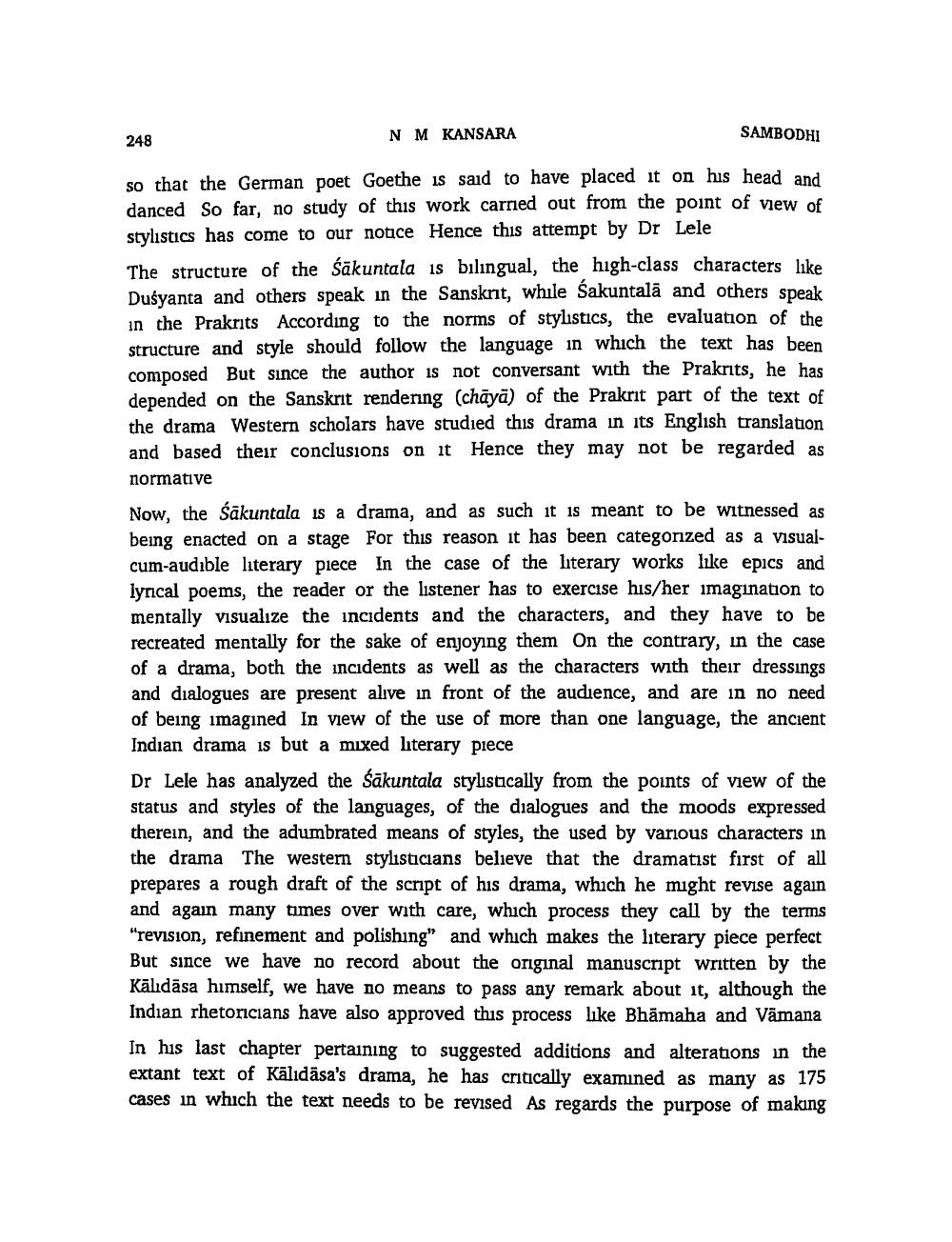________________
248
NM KANSARA
SAMBODHI
so that the German poet Goethe is said to have placed it on his head and danced So far, no study of this work carried out from the point of view of stylistics has come to our notice Hence this attempt by Dr Lele The structure of the sakuntala is bilingual, the high-class characters like Duśyanta and others speak in the Sanskrit, while Śakuntalā and others speak in the Prakrits According to the norms of stylistics, the evaluation of the structure and style should follow the language in which the text has been composed But since the author is not conversant with the Prakrits, he has depended on the Sanskrit rendering (chāyā) of the Prakrit part of the text of the drama Western scholars have studied this drama in its English translation and based their conclusions on it Hence they may not be regarded as normative Now, the sakuntala is a drama, and as such it is meant to be witnessed as being enacted on a stage For this reason it has been categorized as a visualcum-audible literary piece In the case of the literary works like epics and lyncal poems, the reader or the listener has to exercise his/her imagination to mentally visualize the incidents and the characters, and they have to be recreated mentally for the sake of enjoying them on the contrary, in the case of a drama, both the incidents as well as the characters with their dressings and dialogues are present alive in front of the audience, and are in no need of being imagined In view of the use of more than one language, the ancient Indian drama is but a mixed literary piece Dr Lele has analyzed the sakuntala stylistically from the points of view of the status and styles of the languages, of the dialogues and the moods expressed therein, and the adumbrated means of styles, the used by various characters in the drama The western stylisticians believe that the dramatist first of all prepares a rough draft of the script of his drama, which he might revise again and again many times over with care, which process they call by the terms "revision, refinement and polishing" and which makes the literary piece perfect But since we have no record about the original manuscript written by the Kālıdāsa himself, we have no means to pass any remark about it, although the Indian rhetoricians have also approved this process like Bhämaha and Vamana In his last chapter pertaining to suggested additions and alterations in the extant text of Kālıdäsa's drama, he has critically examined as many as 175 cases in which the text needs to be revised As regards the purpose of making




